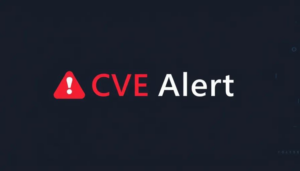Redis ‘returns’ To Open Source With Agpl License
Redis, the company behind the popular value-key database of the same name, has returned its main system to an open source license, although the move failed to satisfy some critics.
Adding the GNU Affero General Public License (AGPL) as an additional licensing option for Redis, starting with Redis 8, the business said it is moving to a licensing model approved as open source by the Open Source Initiative (OSI) – as the Server Side Public License (SSPLv1) it switched to in March last year has remained outside the accepted definition of open source software.
What we had hoped would happen is that people would see SSPL as a good license … It seems to us that they weren’t going to do that
Speaking to The Register last month, Rowan Trollope, CEO of Redis, said: “There hasn’t been any movement towards really accepting SSPL as a valid open source license. What we had hoped would happen is that people would see SSPL as a good license, that it ticked all the boxes, and that even perhaps OSI would reconsider their designation. It seems to us that they weren’t going to do that.”
In 2020, Redis became the most popular database on AWS, owing to its appeal to developers looking for a fast open source cache. Since then, the company behind it has been working to broaden its appeal, and has introduced features aimed at supporting machine learning, JSON documents and the introduction of GenAI to the enterprise stack.
Redis’s source code had been available under the BSD 3-clause license, a permissive agreement which allows developers to make commercial use of the code without paying. But in March last year, the Redis company — formerly Redis Labs — announced that starting with Redis 7.4, it would move to dual-licensed approach under both a Redis Source Available License (RSALv2) and a Server Side Public License (SSPLv1).
Trollope later justified the shift by saying the SSPL license only really “applies to Amazon and Google” – fellow cloud provider Microsoft has agreed commercial terms with Redis. He said if a third party wanted to deliver the Redis open source as part of a cloud service offering that is directly competitive with Redis, it should publish all of the source code or get a commercial agreement with Redis Incorporated.
That position still holds true for the AGPL it will move to from Redis 8: if a cloud provider or a third party makes a service using software under AGPL, it has to open source that service or there is an option to pay Redis and not release code.
Other projects including Grafana and Elastic have similarly adopted the AGPL.
The licensing shift coincided with the return of Redis creator Salvatore Sanfilippo, who built the performant key-value database from 2019 under an open source model.
“The headline is Redis as open source again,” Trollope said.
Included in Redis 8 under the new license model will be features including vector sets as one of Redis’ core data types. Vector sets offer a native way to store and query high-dimensional embeddings, with a focus on vector similarity search for AI workloads.
But the move to AGPL did not appease all critics of Redis’s approach to open source.
Peter Zaitsev, co-founder of open source consultancy Percona, said: “AGPL is like halfway: it’s probably the most restrictive, popular open source license out there. Obviously, that is a better approach for customers who would want to stay with Redis.”
However, he said that for some projects, AGPL would be too restrictive.
The move to SSPL in March last year prompted a fork in the Redis code. Backed by the Linux Foundation, Valkey continued development from Redis 7.2.4. A raft of vendors including AWS, Google, Snap Inc, Ericsson, and Oracle have backed the project.
Valkey 8.1 is out and introduces improvements that the project says reduce latency, increase throughput, and lower memory usage. ®
A considerable amount of time and effort goes into maintaining this website, creating backend automation and creating new features and content for you to make actionable intelligence decisions. Everyone that supports the site helps enable new functionality.
If you like the site, please support us on “Patreon” or “Buy Me A Coffee” using the buttons below
To keep up to date follow us on the below channels.



![Cobalt Strike Beacon Detected - 140[.]143[.]132[.]170:80 5 Cobalt-Strike](https://www.redpacketsecurity.com/wp-content/uploads/2021/11/Cobalt-Strike-300x201.jpg)
